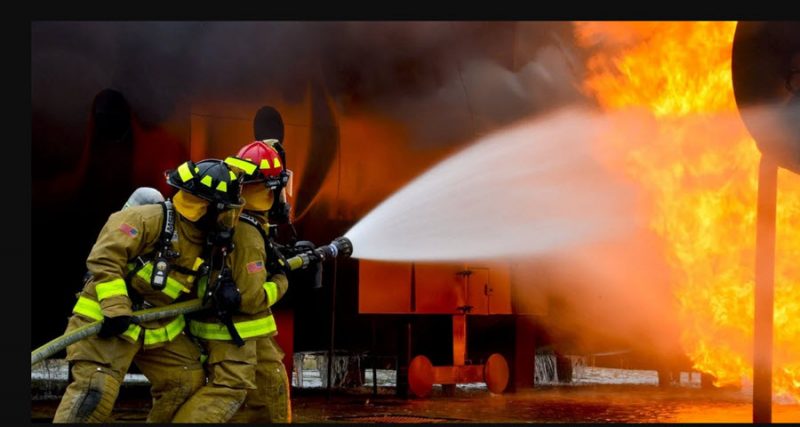
In a world where prevention is key, understanding how to reduce fire incidents is crucial for your safety.
You might be familiar with traditional fire safety measures. However, in the present day, innovation is stepping into the spotlight, ushering in a new era of safety. Today, you are armed with intelligent systems that work seamlessly to prevent, detect, and respond to potential fire hazards.
In this blog, we’ll guide you through cutting-edge solutions designed to enhance your safety and reduce the likelihood of fire incidents.
Smart Fire Detection Systems
Upgrade your fire safety game with smart fire detection systems. These innovative tools employ advanced sensors to detect smoke or heat, instantly alerting you to potential fire risks. You gain real-time awareness, allowing swift preventive action.
Equipped with artificial intelligence, these systems go beyond traditional smoke alarms. They analyze patterns, distinguishing between false alarms and actual threats. The result? A more reliable and efficient method of fire detection, minimizing the chances of false alarms disrupting your daily life.
Integration is key: these smart systems sync with your devices, ensuring you receive alerts wherever you are. With smart fire detection systems, you’re actively preventing them, putting you in control of your space’s safety.
As per Allied Market Research, the worldwide market for fire alarm and detection systems reached a valuation of $60.51 billion in 2020. Moreover, the market is likely to hit $98.90 billion by 2030. The escalating market value reflects a growing recognition of the effectiveness and demand for intelligent fire detection solutions in enhancing overall safety measures.
Firefighting Chemicals
Firefighting chemicals play a crucial role in enhancing fire safety measures. These substances offer diverse options for combating fires effectively. Presently, these chemicals have gained considerable popularity, evidenced by their substantial market worth.
As reported by IMARC Group, the worldwide market for firefighting chemicals attained a valuation of $2.6 billion in the year 2022. The market is expected to touch $3.23 billion by 2028, reflecting a growth rate of 3.70% over the period from 2023 to 2028.
Dry chemicals are a frontline defense, interrupting the fire’s chemical reaction. Rapidly extinguishing flames, they are particularly effective for Class A, B, and C fires involving ordinary combustibles, flammable liquids, and electrical equipment. Easily deployable and versatile, dry chemicals are a go-to solution for a swift response.
Wet chemicals, on the other hand, are specifically designed for Class K fires involving cooking oils and fats. These chemicals create a cooling effect, suppressing the fire and preventing re-ignition. Wet chemicals are essential tools in kitchen fire safety, ensuring you have the right solution for potential fire incidents in cooking environments.
Foam-based extinguishers offer a comprehensive approach, creating a blanket over the fuel to suppress vapors and smother the fire. Effective for Class A and B fires, foam-based solutions are versatile in addressing a variety of fire risks. Their ability to cover and cling to surfaces makes them valuable in scenarios where a sustained fire suppression method is needed.
While foam-based extinguishers are effective, you need to be aware of potential drawbacks. For instance, the aqueous film-forming foam (AFFF) has faced strong criticism in recent years. As per TruLaw, AFFF firefighting foam containing PFAS chemicals has raised health concerns. Exposure to PFAS has led victims to develop severe health conditions such as cancer.
Victims of AFFF exposure are taking legal action, seeking redress for the challenges and health issues associated with PFAS chemicals. They are filing lawsuits with the aim of getting firefighter foam cash settlements to overcome financial difficulties. Moreover, these lawsuits are also aimed at holding manufacturers accountable for not issuing timely warnings about their products.
Autonomous Firefighting Drones
Embrace the future of firefighting with autonomous firefighting drones. These unmanned aerial vehicles swiftly respond to fire emergencies, providing a rapid and effective tool for intervention. Equipped with advanced sensors and cameras, they gather real-time data to assess and combat fires.
These drones play a critical role in reaching challenging or hazardous locations. Their agility allows them to navigate through obstacles and access areas that may be difficult for traditional firefighting methods. By leveraging cutting-edge technology, these drones significantly enhance the speed and efficiency of firefighting efforts.
With programmed algorithms, they can identify and target fire sources, deploy fire suppressants, and monitor the situation, all without human intervention. This autonomy not only accelerates response times but also minimizes the risk to human responders.
Fire-Resistant Materials
In the quest to enhance fire safety, the integration of fire-resistant materials stands out. These advanced materials play a pivotal role in fortifying structures, offering a line of defense against potential fire incidents.
Fire-resistant glass is a game-changer, designed to withstand high temperatures and prevent the spread of flames. It acts as a barrier, maintaining structural integrity during a fire, and provides crucial visibility for safe evacuation.
As per Grand View Research, the market for fire-resistant glass is anticipated to reach a valuation of $5.92 billion by 2028. This underlines the significance of fire-resistant glass in fortifying structures against fire incidents,
Moving beyond traditional materials, fire-resistant coatings offer an extra shield against the destructive force of fire. Applied to surfaces, these coatings form a protective layer that inhibits the ignition and spread of flames. They act as a proactive measure, reducing the vulnerability of structures and materials to fire hazards.
As reported by Polaris Market Research, the worldwide market for fire-resistant coatings reached a valuation of $1,002.3 million in 2021. Forecasts indicate a projected growth with a compound annual growth rate (CAGR) of 3.7% throughout the forecast period. This emphasizes the significance of fire-resistant coatings in providing an added shield against fire incidents.
In conclusion, embracing advanced technologies and tools is paramount in our collective effort to reduce fire incidents. From smart fire detection systems to firefighting chemicals, each tool plays a crucial role. The global landscape of firefighting is evolving, putting you at the forefront of a safer, more resilient future.
Also published on Medium.





